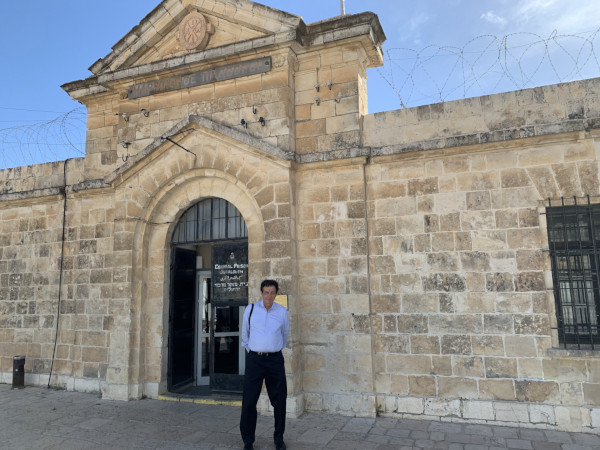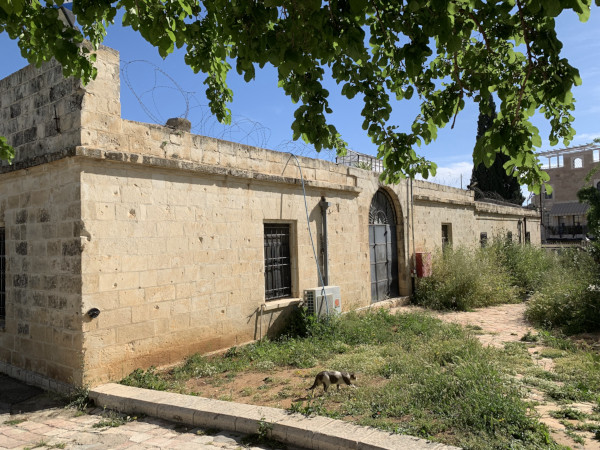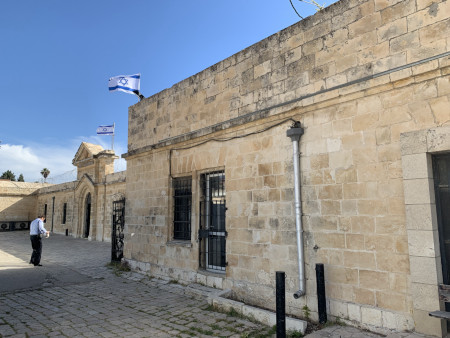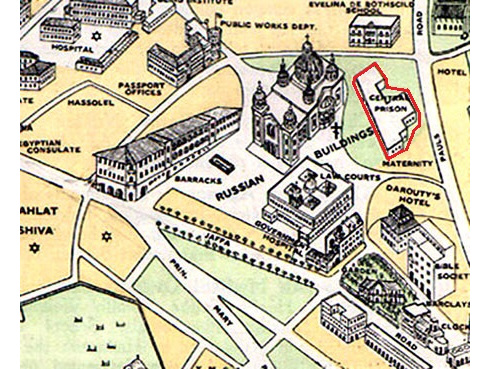The Museum of Underground Prisoners in Jerusalem
The Museum of Underground Prisoners in Jerusalem is the focal point for the story of Feinstein and Barazani, as it is located inside the same notorious central prison where the underground prisoners where held captive during the fight against the British prior to the establishment of the state of Israel.
The Central Prison of Jerusalem in the west part of the Russian Compound was originally a hostel for Christian pilgrims during the early part of the 20th century. The inscription, "Marianskya Women's Hostel" written in Russian can still be seen above the entrance. A beautiful Russian church at the center of the Russian Compound gives the area a unique historical grace. When the British occupied Palestine in 1917, the Russian compound became a British security and administrative center known as "Bevingrad," and the hostel became the central prison.
Many Arabs and Jews were incarcerated in the prison. There were many death-row inmates, including Jewish underground fighters. The British executed the Jewish warriors in Acre, to avoid a hostile Jewish reaction to the execution of Jews in the holy city. Meir Feinstein and Moshe Barazani were the only Jewish warriors that the British attempted to execute in Jerusalem. As we know, the British failed to hang them in the Jerusalem gallows.
The Museum North-West Side
A Jerusalemite cat is strolling peacefully by the side of the prison/museum.
The Russian Compound Map
The Central Prison is marked red in this Mandatory map of the Russian Compound.
The Gate of the Prison
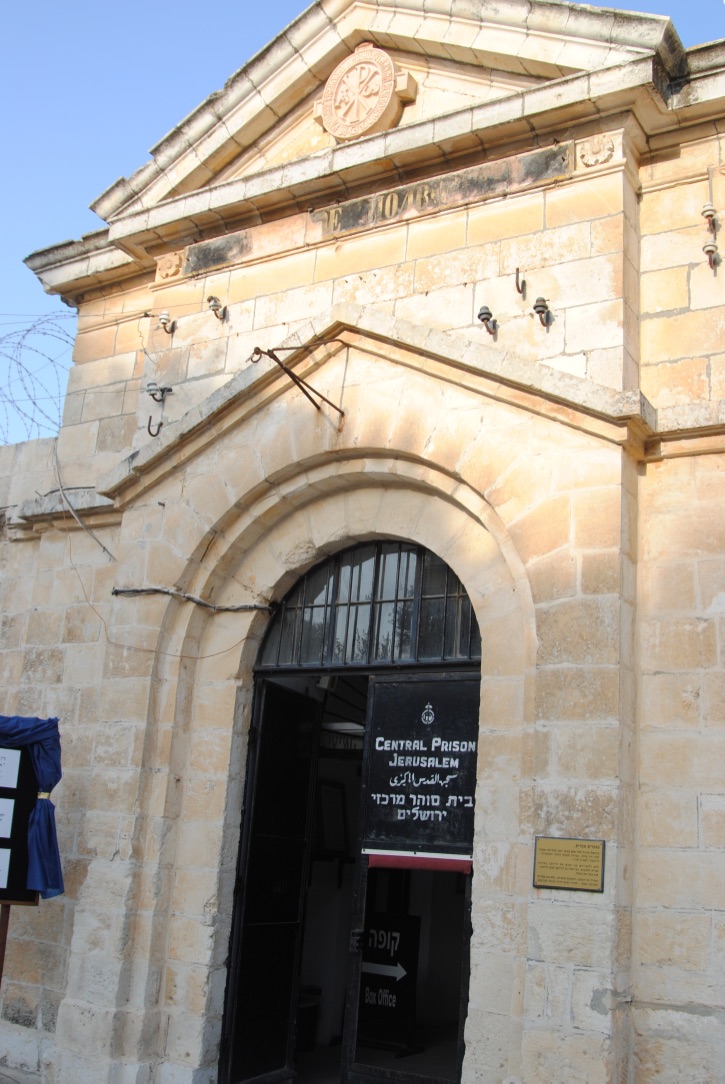
A close up view of the Prison main gate.
Meir Feinstein's Original Grave
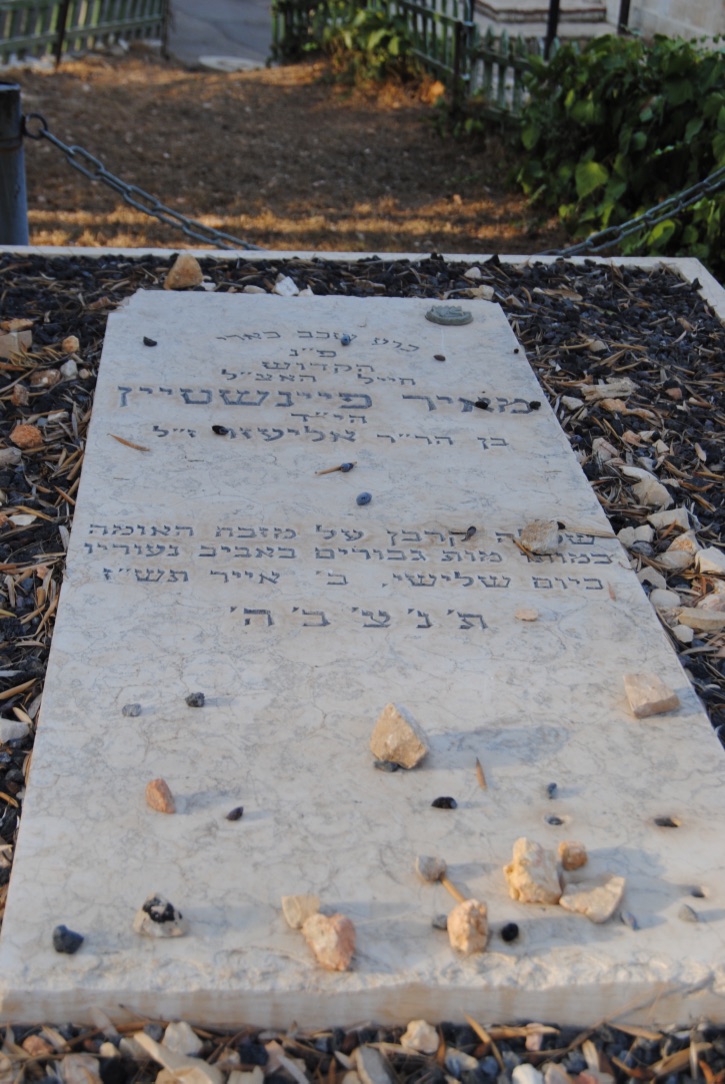
A close up view of Meir's original grave that was designed by my father, Binyamin Feinstein. My father's words, "He was sacrificed on the altar of the nation as he died a hero death at the spring of his youth," relates to my father's claim that Meir was just 17 years old and eight months during his trial by the British.
The Original Graves of Meir and Moshe
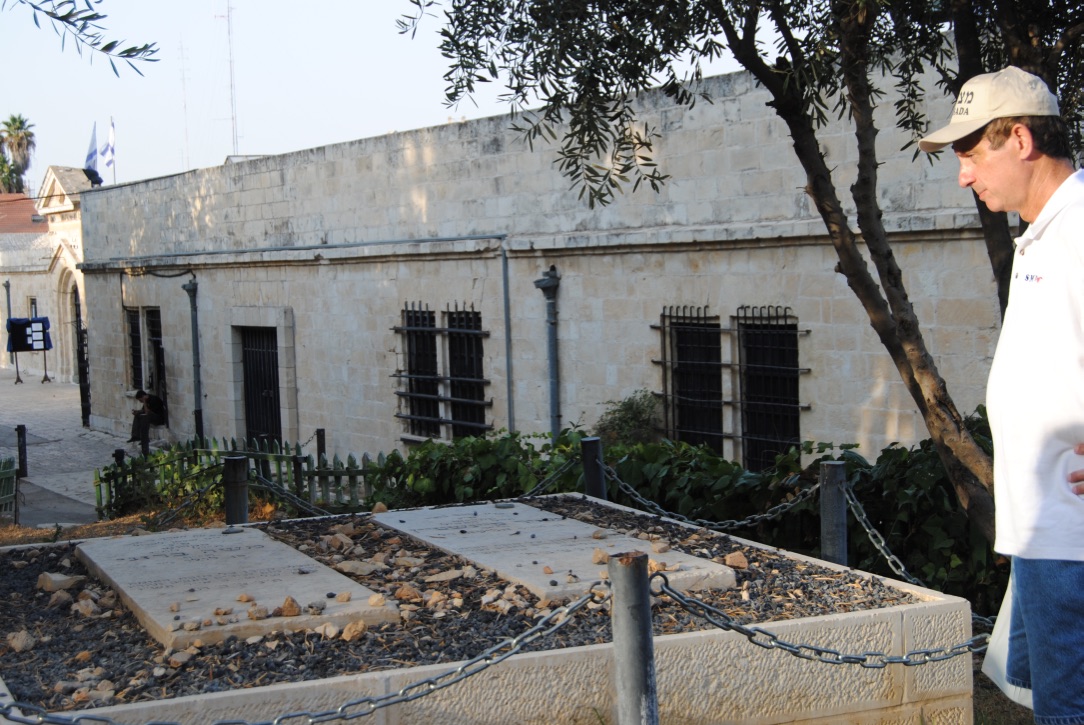
Once Meir and Moshe were recognized as "official" fallen soldiers of Israel, the IDF replaced their "private" graves in Mount Olives with the standard national graves. The original graves were brought to the museum.
Oren and I Near Meir's Image
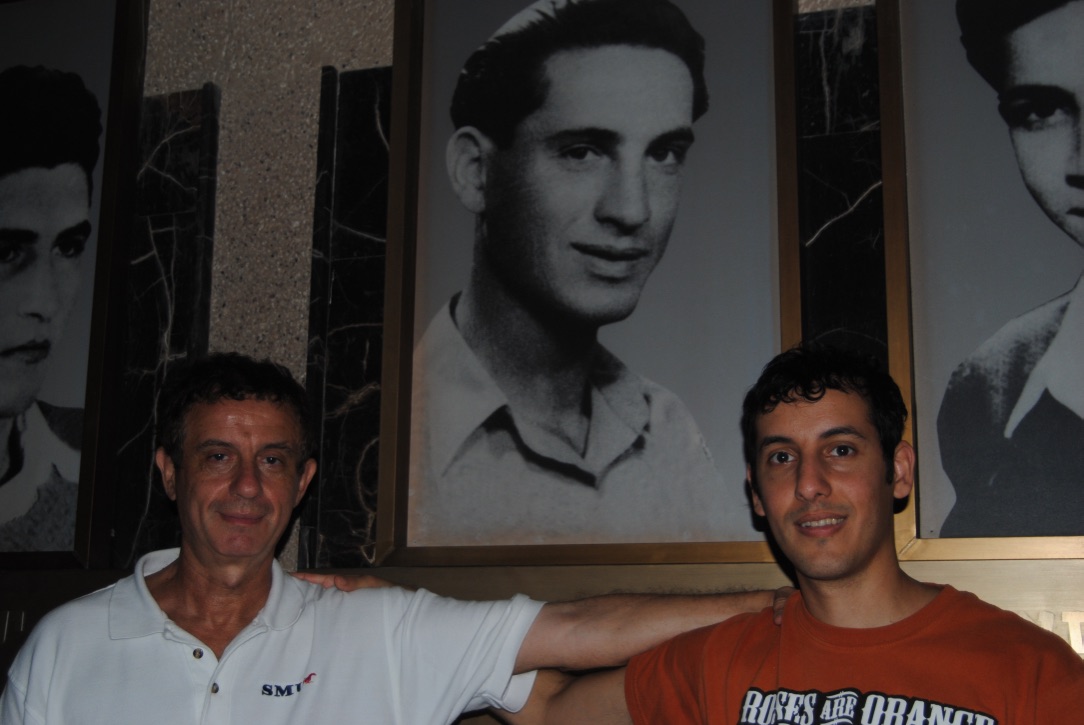
My son, Oren Feinstein (right), and I standing in front of the commemorative image of our uncle. The picture was taken by Emily, now Oren's wife, in October 2009. Perhaps there are some similarities in our faces?
The Prison Warden Office

The Prison Warden Office has been preserved in the museum. It was originally separated by a wall from the secretarial room, and the entry was from the outside.
The Prison Machine Shop
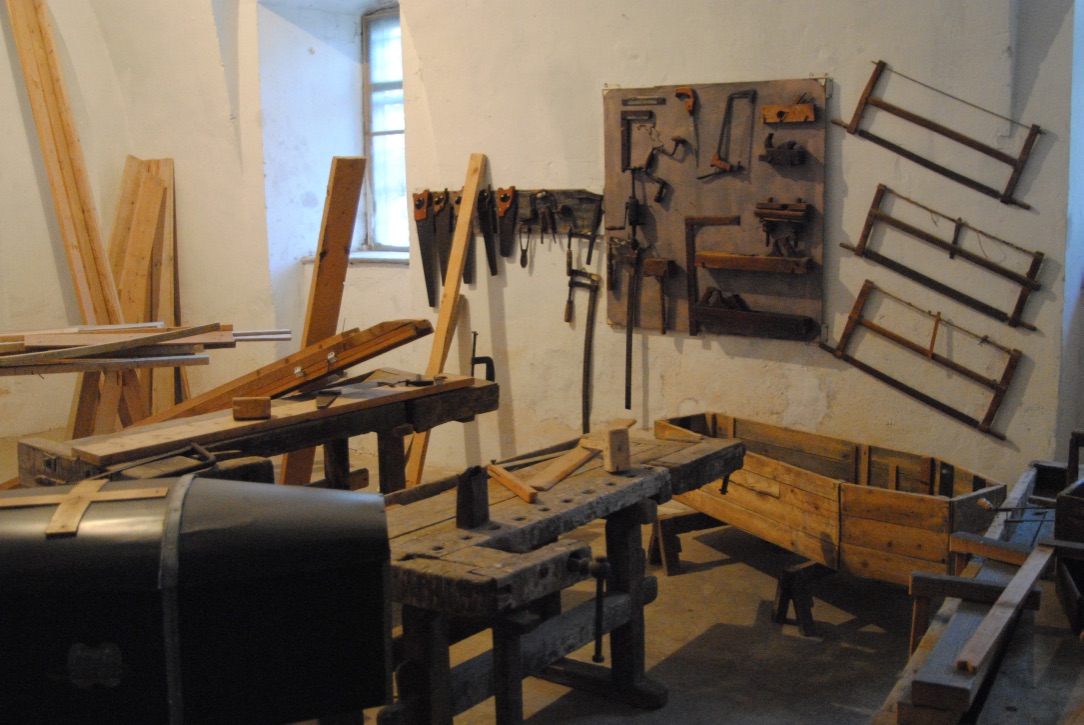
The prisoners worked in such machine shops within the prison, which were clandestinely used by Eliezer Ben-Ami for the construction of the orange grenades.
Prison Medical Office
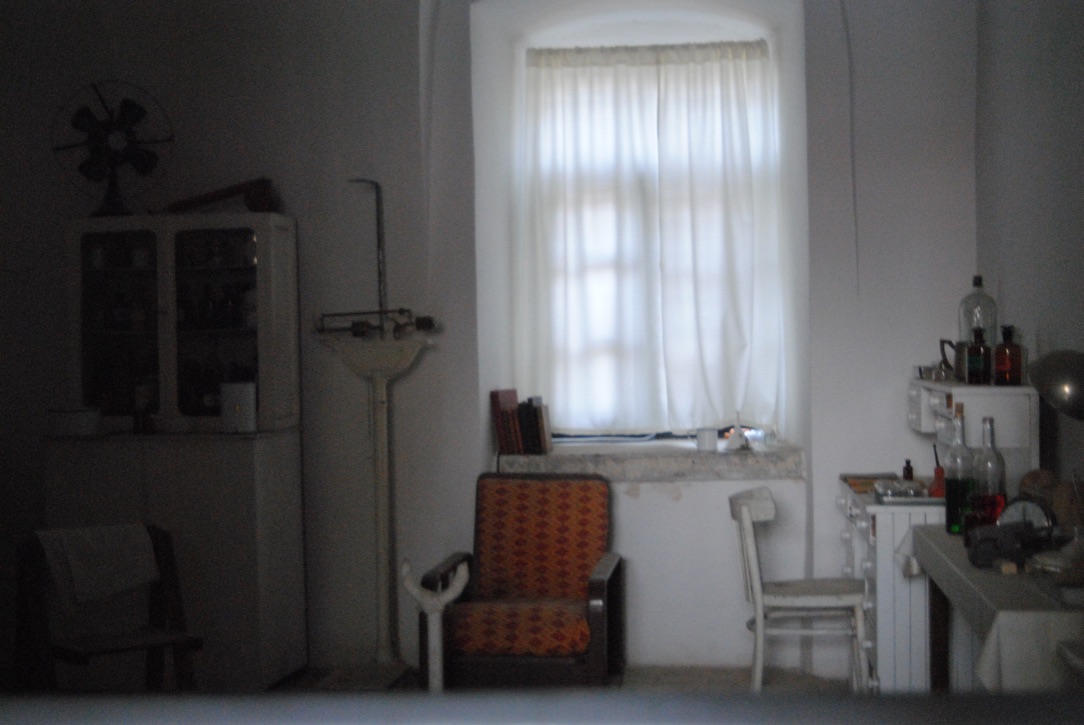
The Prison medical office was a typical light medical facility. There was a hospital nearby where Dov Gruner, Meir Feinstein, and many other underground injured fighters were hospitalized.
The Gallows

Approximately 100 Arab prisoners were executed in these gallows during the British Mandate. No Jews were hanged in Jerusalem, as Meir and Moshe chose to blow themselves up prior to their execution.
The Prisoner's Shower Area
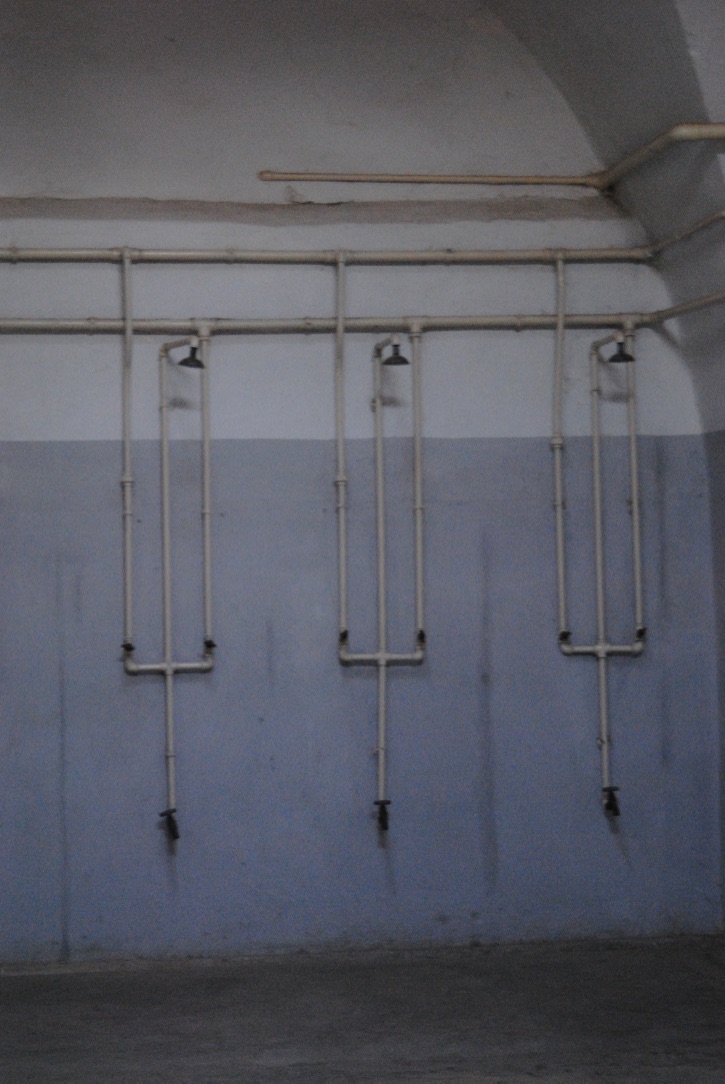
The prisoner's shower area.
The Condemned Prisoner's Cells

The condemned prisoners awaited their execution in two similar cells near the gallows.
Yoram Tamir Shows the Bible
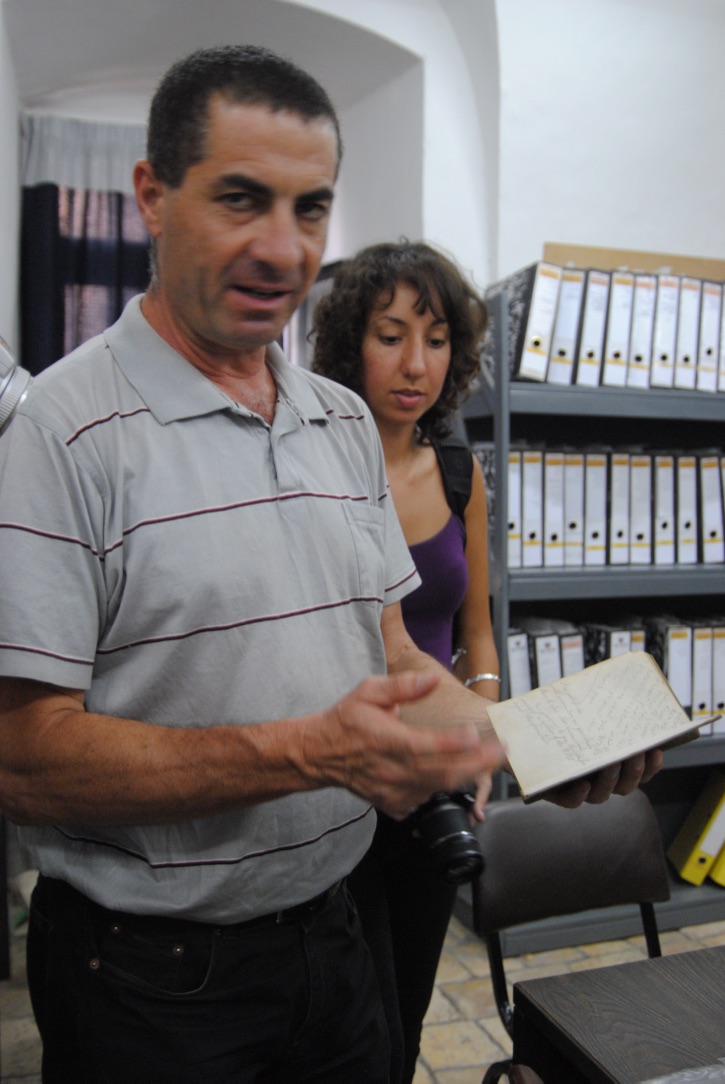
Yoram Tamir, the energetic general manager of the Museum, is showing my family the Bible, in October 2009. My daughter, Donna Heaton, is standing behind Yoram.
Meir's Famous Bible
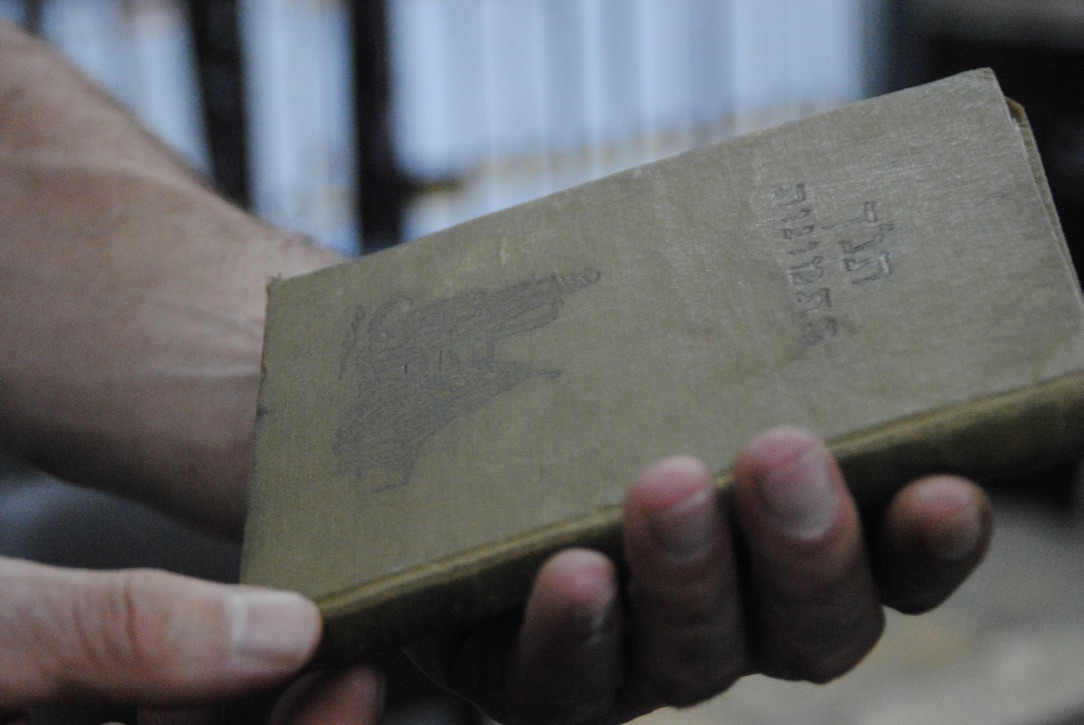
Meir's Bible that was returned to my family is an important exhibit in the Museum. The Bible is a Hebrew version of Gustave Doré's Illustrated Bible.
Meir's Dedication of the Bible to Goodwin
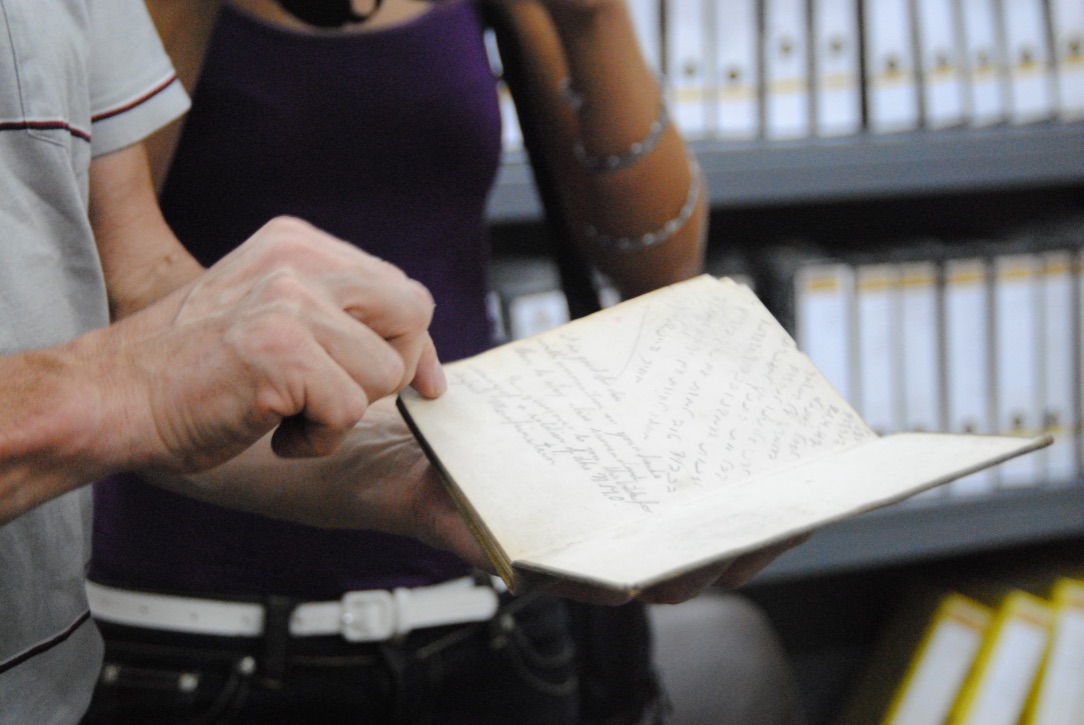
Meir gave the Bible to the "good jailer," Thomas Henry Goodwin, minutes before he and Moshe blew themselves up. I am pointing to the dedication page.
